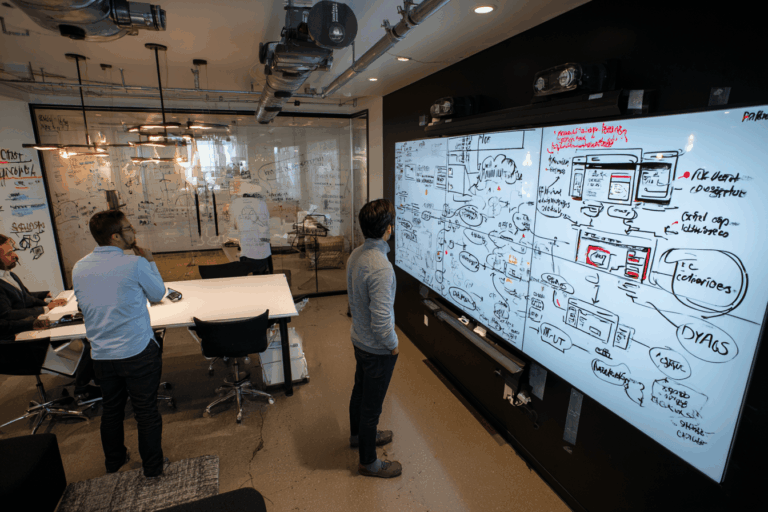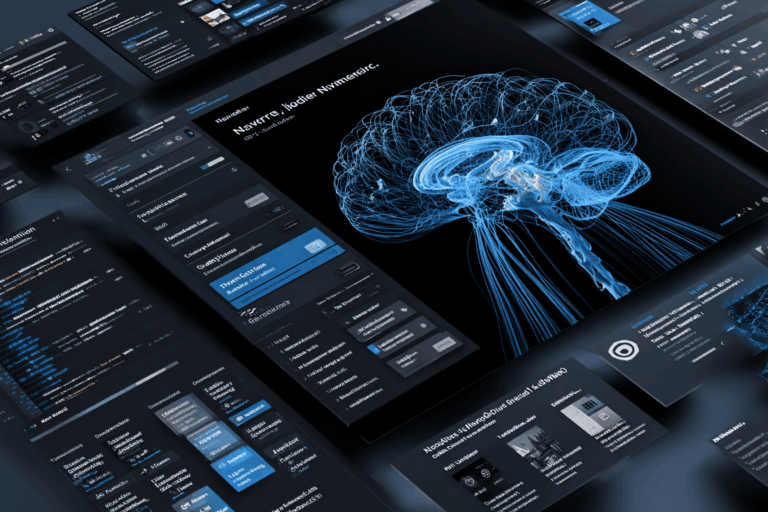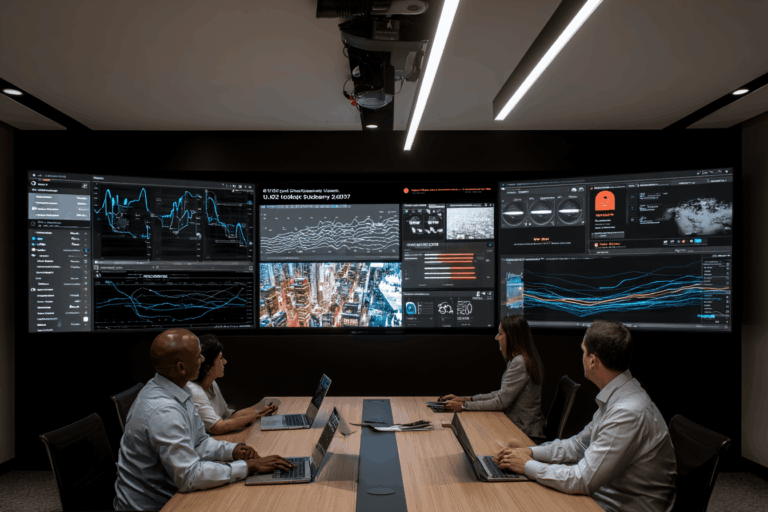The Complete Guide to AI Search Optimization: What Every Business Needs to Know in 2025
Introduction and Overview
In 2025, artificial intelligence has fundamentally transformed how search engines operate and how users discover content online. AI search optimization is no longer optional—it’s essential for any business looking to maintain visibility in an increasingly competitive digital landscape. Unlike traditional SEO that focused primarily on keywords and backlinks, AI search optimization requires a more sophisticated approach that aligns with how modern AI-powered search engines understand, interpret, and rank content.
Today’s search engines use advanced large language models (LLMs), neural networks, and predictive algorithms to deliver increasingly personalized and context-aware results. Google’s Search Generative Experience (SGE), Microsoft’s AI-enhanced Bing, and other AI-powered search tools now dominate the market, creating both challenges and opportunities for businesses.
This comprehensive guide will walk you through everything you need to know about optimizing for AI search in 2025—from fundamental concepts to advanced implementation strategies and emerging best practices.
Key Concepts and Fundamentals
Understanding AI Search Algorithms in 2025
Modern AI search engines operate on several key principles that differ significantly from traditional search:
- Intent Recognition: AI systems now understand the meaning behind queries rather than just matching keywords
- Contextual Understanding: Search engines consider user history, location, device, and other contextual factors
- Content Depth Analysis: AI evaluates expertise, authoritativeness, and trustworthiness through sophisticated content analysis
- Multimodal Search: Today’s AI search encompasses text, images, video, and voice inputs
- Predictive Capabilities: AI anticipates user needs before they’re explicitly expressed
The New E-E-A-T Framework
Google’s E-E-A-T (Experience, Expertise, Authoritativeness, Trustworthiness) framework has evolved significantly in 2025:
| E-E-A-T Component | 2023 Focus | 2025 Focus |
|---|---|---|
| Experience | Personal experience with topics | Demonstrable application and real-world testing |
| Expertise | Credentials and background | Practical knowledge and problem-solving capabilities |
| Authoritativeness | Industry recognition | Community engagement and impact measurement |
| Trustworthiness | Accuracy and transparency | Verifiability and consistent value delivery |
AI-Specific Ranking Factors
The key ranking factors for AI search in 2025 include:
- Content Comprehensiveness: How thoroughly your content addresses user needs
- Information Freshness: How current and relevant your information is
- Engagement Metrics: How users interact with your content
- Entity Relationships: How well your content connects related concepts
- Semantic Relevance: How meaningfully your content aligns with search intent
- Multimodal Optimization: How well your content performs across different media types
Step-by-Step Implementation
1. Conduct an AI-Ready Content Audit
Begin by assessing your existing content through an AI search lens:
- Identify content gaps using topic modeling tools
- Evaluate content depth and comprehensiveness
- Assess content freshness and update frequency
- Review entity relationships and semantic connections
- Analyze competitor content for AI-friendly attributes
Practical Tool: Use AI content analysis platforms like ContentScale.ai or Clearscope to evaluate your content against AI ranking factors.
2. Develop an AI-Optimized Content Strategy
Create a content plan that aligns with AI search requirements:
- Map content to specific user intents rather than just keywords
- Create comprehensive content clusters that address topics holistically
- Establish a regular content refresh schedule
- Incorporate diverse content formats (text, video, interactive elements)
- Build semantic connections between related content pieces
3. Implement Technical AI Search Optimizations
Make technical adjustments to improve AI crawlability and understanding:
<!-- Example of enhanced structured data for AI crawlers -->
<script type="application/ld+json">
{
"@context": "https://schema.org",
"@type": "Article",
"headline": "Complete Guide to AI Search Optimization",
"author": {
"@type": "Person",
"name": "Jane Smith",
"jobTitle": "AI Search Strategist",
"expertise": ["Search Optimization", "AI Technology"]
},
"datePublished": "2025-07-27",
"dateModified": "2025-07-27",
"mainEntity": {
"@type": "HowTo",
"name": "How to Optimize for AI Search",
"step": [
{
"@type": "HowToStep",
"name": "Conduct Content Audit",
"text": "Begin by assessing your existing content through an AI search lens"
},
// Additional steps...
]
}
}
</script>
Additional technical optimizations include:
- Implementing advanced schema markup for entity relationships
- Optimizing for passage indexing with clear section structure
- Using semantic HTML to improve content parsing
- Enhancing page speed for AI crawling efficiency
- Implementing natural language processing (NLP) friendly URL structures
4. Create AI-Optimized Content
When creating content for AI search, follow these guidelines:
- Answer Questions Thoroughly: Address primary and related questions comprehensively
- Use Clear Structure: Implement logical hierarchy with appropriate headings
- Include Diverse Formats: Incorporate text, images, videos, and interactive elements
- Provide Contextual Information: Connect concepts and explain relationships
- Demonstrate E-E-A-T: Show real experience, expertise, and authority
Best Practices and Tips
Content Quality Signals
AI search engines in 2025 prioritize these quality signals:
- Comprehensive Coverage: Address topics thoroughly from multiple angles
- Original Insights: Provide unique perspectives and data not found elsewhere
- Practical Application: Include actionable steps and real-world examples
- Cross-Reference Accuracy: Ensure factual consistency across all content
- Regular Updates: Maintain content freshness with systematic reviews
Semantic Optimization Techniques
Enhance semantic relevance with these approaches:
- Topic Modeling: Use AI tools to identify related concepts and subtopics
- Entity Mapping: Create clear relationships between people, places, concepts, and products
- Natural Language Patterns: Write in a conversational, question-answering style
- Intent Matching: Align content with specific user journey stages
- Semantic Markup: Implement advanced schema.org vocabulary
User Experience Optimization
AI search engines heavily weight these UX factors:
- Page Experience: Ensure fast loading, visual stability, and mobile-friendliness
- Engagement Metrics: Optimize for dwell time, scroll depth, and interaction rates
- Information Architecture: Create intuitive navigation and content discovery paths
- Accessibility: Implement inclusive design practices for all users
- Multimedia Experience: Ensure seamless integration of text, images, and video
Common Mistakes to Avoid
Outdated SEO Practices That Harm AI Rankings
These traditional SEO tactics now negatively impact AI search performance:
- Keyword Stuffing: AI engines penalize unnatural keyword usage
- Thin Content: Superficial coverage of topics signals low value
- Content Siloing: Disconnected content pieces lack semantic relationships
- Manipulative Tactics: Link schemes and artificial signals are easily detected
- Static Content Strategy: Unchanging content appears outdated to AI crawlers
Content Format Pitfalls
Avoid these content structure issues:
- Poor Content Hierarchy: Confusing organization impedes AI understanding
- Lack of Clear Answers: Indirect or buried information frustrates both AI and users
- Inconsistent Entity References: Varying terminology creates confusion
- Missing Contextual Connections: Failing to relate concepts limits semantic value
- Overly Complex Language: Unnecessarily complicated content reduces accessibility
Advanced Strategies
Predictive Search Optimization
Position your content for predictive search features:
- Intent Forecasting: Anticipate follow-up questions users might have
- Journey Mapping: Create content that addresses each stage of user discovery
- Trend Alignment: Connect content to emerging topics and seasonal interests
- Personalization Signals: Include elements that help AI customize experiences
- Multimodal Preparation: Optimize content for voice, visual, and text search simultaneously
Generative AI Integration
Leverage generative AI in your optimization strategy:
- AI-Assisted Content Enhancement: Use AI tools to identify content improvement opportunities
- Automated Content Freshness: Implement systems for regular AI-powered content updates
- Semantic Network Building: Develop comprehensive topic networks with AI assistance
- Competitive Intelligence: Monitor competitor AI optimization with automated tools
- Performance Prediction: Use AI to forecast content performance before publication
Conclusion and Next Steps
AI search optimization in 2025 requires a fundamental shift from traditional SEO approaches to a more sophisticated strategy focused on semantic relationships, user intent, and comprehensive content quality. By implementing the strategies outlined in this guide, businesses can improve visibility in AI-powered search results while delivering genuine value to their audience.
Action Items for Implementation
-
Immediate (Next 7 Days):
- Conduct an AI readiness audit of your top-performing content
- Implement basic schema markup improvements
- Review and update your content refresh schedule
-
Short-Term (Next 30 Days):
- Develop a comprehensive entity map for your primary topic areas
- Create or update content clusters around core topics
- Implement advanced technical optimizations
-
Long-Term (Next Quarter):
- Establish an ongoing AI optimization workflow
- Develop predictive content strategies for emerging topics
- Implement cross-channel AI optimization
The future of search is intelligent, contextual, and increasingly personalized. By embracing these AI search optimization principles now, your business will be well-positioned to maintain visibility and relevance in the evolving digital landscape of 2025 and beyond.






